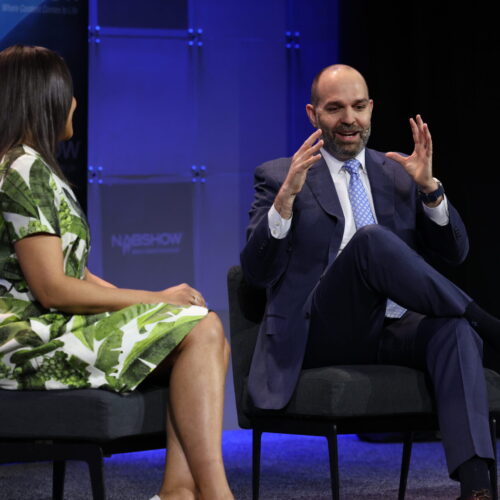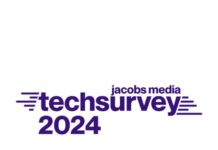
AM radio received an audience ovation during NAB CEO Curtis LeGeyt’s fireside chat during the NAB Show Welcome, as it continues to be one of broadcasting’s biggest regulatory success stories of the year with the AM For Every Vehicle Act’s passage imminent.
LeGeyt underscored the critical role AM radio continues to play in the lives of Americans and the broad, bipartisan effort to preserve it. With more than 400,000 listeners actively petitioning Congress, LeGeyt detailed how the bill, aiming to ensure the continuity of AM radio, has garnered more than half of the House’s co-sponsorship.
LeGeyt highlighted the broader significance of this movement, expressing optimism about getting the bill passed, particularly in light of Ford’s decision to retain AM radio in their vehicles. He conveyed how the groundswell of public support for AM radio provides broadcasters a renewed sense of purpose and validation, as the Main Stage crowd burst into applause.
While the official co-sponsor number has not been updated since the State Leadership Conference visits to Capitol Hill, LeGeyt believes that the AM For Every Vehicle Act has the 60 Senate sponsors it needs to be able to pass and beat any potential filibuster.
Zooming out from AM, LeGeyt emphasized the resource scarcity at local stations and stressed the importance of ensuring these entities can compete with Big Tech by redirecting resources to support local storytellers and journalists.
LeGeyt also addressed the potential dangers and opportunities presented by generative AI, particularly regarding its impact on disinformation and misinformation. He noted that while AI poses risks of losing content control and adding burdens to local newsrooms, it also holds the potential to aid in distinguishing fact from fiction in real time, enhancing the efficiency and accuracy of local reporting.
Highlighting the reliability of modern technology, LeGeyt referenced a CBS report stating that only 10% of videos from the Israeli-Hamas conflict were authentic, underscoring the critical need for technologies that can verify real-time coverage and support public demands for accurate information.
The NAB leader’s vision for the future is focused on the upcoming elections. His aspiration is for broadcasters to effectively guide communities through the election process, instilling trust in the outcomes and fostering informed discussions.
After the fireside chat, Radio Ink was able to discuss the rapid pace at which the FCC has revisited and acted on several longstanding matters that affect radio, such as FM geo-targeting and the efficacy of the Main Studio Rule elimination, with the Commission operating at full capacity with five commissioners.
LeGeyt expressed gratitude for the engagement with all five FCC commissioners, noting their active participation in various industry conferences and their willingness to hear out the broadcasting sector. Despite this open dialogue, he conveyed a desire for even greater involvement from the FCC in these discussions, emphasizing the critical need for continued advocacy on the relevance of local broadcasts.
A significant point of discussion was the FCC’s approach to the FM geo-targeting issue, particularly related to ZoneCasting. LeGeyt appreciated the FCC’s cautious progress on this, acknowledging their receptiveness to the industry’s technical concerns and the potential negative impacts on local stations’ ability to serve their communities and sustain viable advertising models. He highlighted the unique local focus and reach of these stations as their competitive advantage, which could be undermined by unchecked implementation of micro-targeting technologies.
Regarding localism, LeGeyt clarified that while the FCC did not modify the main studio requirement, it has taken steps to encourage local content production. He praised the FCC’s recognition of the vital role local broadcasters play, especially in the context of the declining newspaper industry, and their attempts to incentivize further local engagement.
LeGeyt also touched upon the urgent need for media ownership modernization to help local broadcasters compete more effectively against major players like SiriusXM and streaming services. He argued that current media ownership regulations are outdated, explaining that they do not accurately reflect the competitive realities of today’s media landscape where radio stations compete with a broad array of digital platforms for both audience and advertising dollars.
The hope is that both the courts and the FCC will recognize and address these challenges before it is too late, ensuring the sustainability of local broadcasting as a crucial source of trusted news and storytelling.








